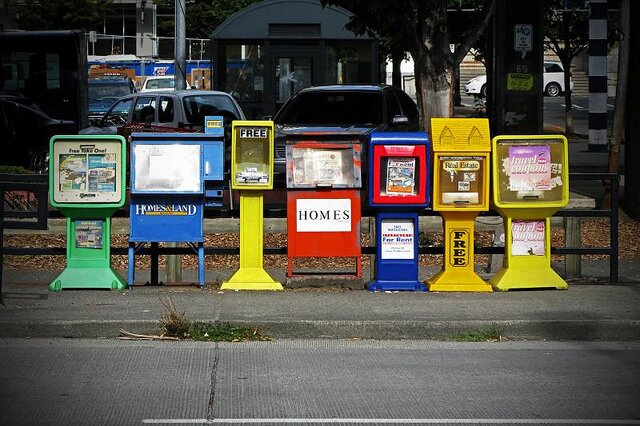The “junk” trade is a thriving industry in this county. Do you realize there are more than 165,000 garage sales a week, with $4 million in revenue from those same garage sales and their near cousins: yard sales, tag sales, moving sales, estate sales? That’s an enormous amount of estimated cash being spent. Where’s your vig?
That’s right, it’s actually possible to make some money in the junk trade. It’s not easy, but with a few tips, a little bit of knowledge, and a little investment in time, you’ll be surprised how much money you can make (presuming your initial expectation is at or near zero). In this four-part series, as The SunBreak’s Garage, Yard & Estate Sales Correspondent, I will break down the steps you need to find, buy, and sell items in order to make some extra cash. In part one, we’ll discuss what you need to do before you hit the sales.
Start off by getting a pair of light gloves and a flashlight. The junk trade is a dirty business and you’ll be handling a lot of different items. Also, in many house sales, there are dark corners, shelves and cupboards.
You’ll also need a magnifying glass or a loupe with a 10x magnification. These can usually cost between five and eight dollars, and can be found at photography stores like Glazer’s. This small investment, properly used, is key to success when finding and selling used items. I’ll explain later.
You’ll need a smart phone, particularly when you first start out. You can’t know everything. You might see an item that is appealing, but be unsure of the value. A quick Internet check will help you find the right price to buy with enough room to make a profit when you sell it.
Get to know your local antiques dealer and find out what is selling and what is a hot sell. Go to thrift stores, Goodwill stores, or Value Village. Go online. Find out what items are selling, and what prices they are selling for.
Most importantly, you need patience and nerve.
It takes time to go through a single house full of items for sale and you’ll need to attend a few to score big. You’ll be wading through houses, basements, and garages that are 95-percent full of common, easy-to-find items: actual junk. The patient shopper is looking for the five percent that is underpriced, overlooked, and not understood. Getting items at the right price, a price with room to make profit, is the hardest part of the junk trade. Prices at any private sale vary tremendously. Remember, in many cases family members are just pricing off the cuff. These days, many families hire a professional estate sale company to handle the actual sale. Luckily, even professionals make pricing mistakes.
The important thing is to never accept the price on any item. Negotiate. Be prepared to walk away. And, in the beginning, don’t be afraid to make a few mistakes.
Don’t waste your money on items that will never sell. Porcelain china, for example, is always highly priced. But there isn’t a shortage or market for it. If you need it, fine, buy it. Most likely you won’t be able to resell it for more than you paid.
Make sure you attend estate sales in particular. Go to estatesales.net and plan to try out two or three sales a week. The two best times to attend a sale are on the first day, usually a Friday. That usually means higher prices, but more items. Conversely, the next best time is on the last day. You’ll have fewer items to see, but lower prices — and usually sellers that are willing to deal. Yard sales and garage sales are less likely to have valuables. Mostly, you’ll find baby items, glassware, and household items of no resale value. Never go on a first day to such sales; usually a drive-by on the last day will tell you if there’s hope for profit.
When you attend a sale, take your time. The more items a sale has, the better chance there is to find something mispriced or overlooked. Get down on your knees in closets, in the basement, and in the bedrooms. Look everywhere; don’t be afraid to turn the house upside down, unless you’ve already been asked to leave.
It’s a competition. Estate sales are big business. People get up early and they fight for position in lines, for items they covet and for the lowest prices. But you can win if you have more knowledge. We’ve now told you how to wade into battle. In our next installment, we’ll tell you the items where your fortune can be made.



 After long refusing to release hard figures on Kindle sales, Amazon confirmed that they have sold at least four with their announcement today that “Kindle unit sales on Black Friday — including the new Kindle Fire tablet — were four times greater than whatever they were on Black Friday a year ago,” as GeekWire puts it.
After long refusing to release hard figures on Kindle sales, Amazon confirmed that they have sold at least four with their announcement today that “Kindle unit sales on Black Friday — including the new Kindle Fire tablet — were four times greater than whatever they were on Black Friday a year ago,” as GeekWire puts it.